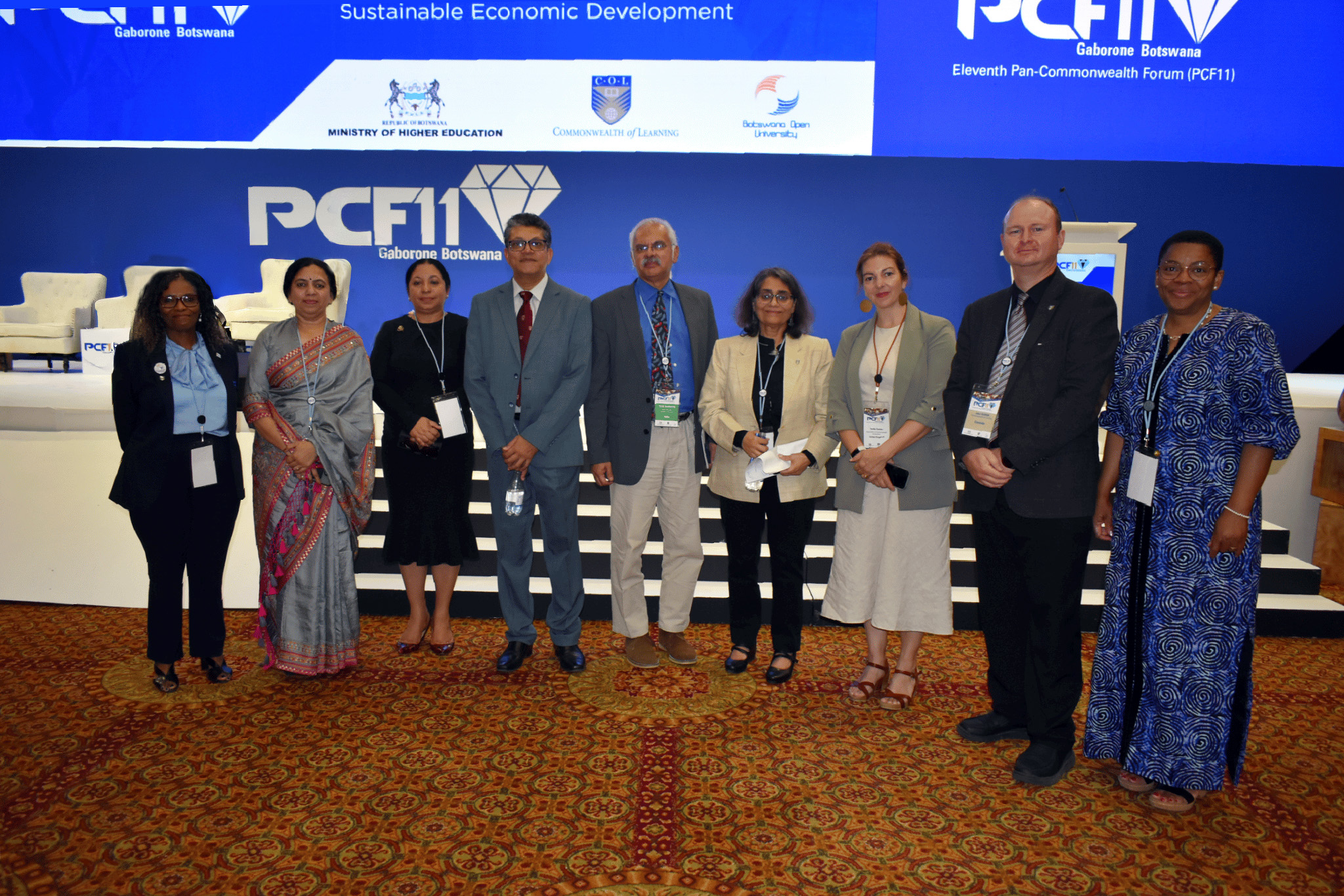
By Jyotsna Jha
Equity and quality in education are often raised as issues in conflict with each other. It is often mentioned that including those who face deprivations on account of one or more of these reasons: gender, race, location, disabilities, and so on, is challenging in education, and that impacts quality adversely. It is indeed challenging to be inclusive as it requires the system to address and respond to specific needs, but any system that can bring quality only to a selected few and that too conditional upon the presence of privileges, cannot really be referred to as a high-quality education system.
In today’s fast-changing world shaped by technology, political uncertainties, and shifts in economic and labour markets, the education discourse calls for radical change. The recent Gaborone Statement from the Eleventh Pan-Commonwealth Forum on Open Learning (PCF11) called for seven “collective actions” to reimagine how we approach education, particularly open learning.
This blog explores the need to break through long-standing boundaries in the education discourse, drawing on the Gaborone Statement’s call for collective action, specifically to advance inclusive access, build skills for productive and resilient lives, and create flexible and appropriately used technology-enabled learning pathways that truly respond to the diverse needs of learners.
Conventional – Open
The classroom, which enables face-to-face interactive sessions between teachers and students, remains an inalienable backbone of the formal, or so-called conventional, education system. An important feature of the open system, however, is that such a physical classroom is often absent. Despite the widespread adoption of online or so-called ‘open’ elements within conventional systems, and the inclusion of face-to-face components within open systems, these two continue to be defined as distinct and mutually exclusive models.
There is a need to break this dichotomy and view the two as complementary, where a ‘blended’ approach becomes the norm and the tilt towards ‘open’ and ‘classroom’ elements is decided on a case-by-case basis—taking into account the context, course, objectives, and target groups. This approach is essential for widening the learner’s experience to reflect the real world, which is increasingly multi-modal. This may include digital, face-to-face, technology, or AI-mediated, and nature, or community-based peer interactions, among others. These diverse modes of engagement not only prepare learners to understand these means more deeply but also help them to experience their potential and limitations.
Academic (Knowledge) – Vocational (Skills)
Separating academic and vocational streams that signify knowledge and skills, respectively—is a common practice. While the two areas are distinct, it is important to recognise that they are also complementary. Early separation can lead to several undesirable consequences. For instance, it often creates a hierarchy in which academic streams are viewed as ‘superior’ to vocational ones, without acknowledging that vocational learning represents the application of knowledge, and that applying skills across diverse contexts (experimentation) often leads to new knowledge. Hence, one is incomplete without the other. At the early stages of education, which can be considered inclusive of secondary stages, it is essential that learners are exposed to both types of streams and disciplines to help them make informed choices for post-secondary education and participation in the labour market.
It is possible to bridge this boundary by redesigning the curriculum to ensure that both academic and vocational components are integrated into all courses for learners. This approach also responds more effectively to diverse individual preferences and the fast-changing labour market needs.
School environment – Social environment
The school environment has been recognised as a crucial component of the learning environment, while the role of the home or broader social environment has also gained attention, particularly in the context of understanding student disengagement and academic failure. The limitations of schools in influencing the social environment are understandable, especially within conventional systems. However, in open learning and to some extent within the conventional education system, the social or out-of-school environment also serves as a learning environment and assumes significant importance. For the learner, it forms a continuum, where school is part of socialisation, and home or community are also spaces for ongoing learning.
The social environment shapes learners’ experiences and responses in both open and conventional education systems. It is therefore important to recognise this and establish processes that support the learner’s social environment—both within and beyond the school. This is particularly important when striving for equity with quality, as learners facing disadvantages require more focused and sustained attention. The message from contemporary research is clear: individual and group-based mentoring that goes beyond subject or discipline-related teaching and learning is critical for ensuring learner engagement, retention, and completion.
Breaking these barriers will open doors for reforms that in the schooling system that are critical to ensure that children from all backgrounds and contexts are learning to face the future that is by all means likely to be more and more challenging.
Follow Dr Jyotsna Jha to keep up to date with COL’s work in open and distant education across the Commonwealth.


